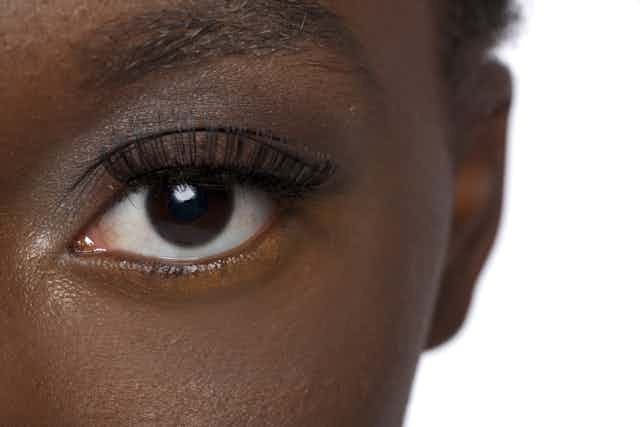Glaucoma is the leading cause of irreversible blindness in the world. The disease is known as ‘the sneak thief of vision’ because there are no early warning signs or painful symptoms leading to its diagnosis. The Conversation Africa’s Health and Medicine Editor Joy Wanja Muraya asked Professor Dan Kiage to explain the challenges African countries face in managing the disease.
What are the top concerns about treating and managing glaucoma in Africa?
Glaucoma is a slow and silent progressive disease that damages the optic nerve of the eye. If not treated, it can lead to gradual loss of sight where the individual sees blind spots and may eventually go blind. About 4.5 million people are blind due to glaucoma, a number that’s expected to more than double by 2020.
Glaucoma disproportionately affects Africans. Their higher risk remains unclear though some studies have related it to genetic differences in the anatomic structure of the optic nerve.
The diagnosis of glaucoma in Africa is really low. One study shows that in rural villages in East Africa only 2% to 3% of the patients with glaucoma had been diagnosed. This is partly due to the fact that sub-Saharan Africa has the lowest ratios of health workers to population anywhere in the world. And patients seek medical treatment quite late.
Accurate diagnosis of early glaucoma requires well trained ophthalmologists and advanced equipment. But in sub-Saharan Africa the majority of primary and secondary health care centres are run by poorly equipped lower cadres of eye care workers who lack the skills and capacity to accurately diagnose advanced symptomatic stages of glaucoma.
Glaucoma medicines are also not widely available, and they’re expensive.
Who is most at risk? Are Africans receiving appropriate glaucoma treatment?
Anybody is at risk, though some people face a higher risk of getting the disease.
These include people
with a history of glaucoma in the family
aged over 40 years old
black race
with symptoms such as short slightness, known as myopia
with other predisposing symptoms like migraines, low blood pressure at night known as nocturnal hypotension, diabetes mellitus and thyroid disease.
For people with this risk factors, routine eye examinations is mandatory.
Glaucoma can be diagnosed early through a regular eye check up by an eye specialist. Once diagnosed, a person has to commit to lifelong follow up appointments.
What is Kenya doing about the gaps?
The lack of resources to deal with glaucoma in Africa is shocking. For example, Kenya has two qualified glaucoma specialists. This is clearly not enough but it’s a step ahead of most countries in Africa which have none.
Kenya has taken steps to plug the gap. Every county referral hospital now has an eye health specialist, or ophthalmologist, with basic diagnostic and treatment tools for glaucoma.
And since 2006 Kenya has collaborated with other countries in the region and partnered with advanced centres in Canada in a program called STOP Glaucoma in Sub Saharan Africa.
The four main pillars of the program include building capacity, enhancing awareness and improving glaucoma detection and management.
The aim of the initiative is also to train the first generation of highly qualified glaucoma sub-specialist leaders and develop standards of care and guidelines for management of glaucoma in the region.
In addition, a glaucoma community team has been developed to bring eye specialists together. It established guidelines for glaucoma treatment and management of the disease in Africa.
The ultimate aim is to reduce the burden of blindness from glaucoma in sub Saharan Africa.
What is the way forward for dealing with glaucoma in Africa?
The main approaches for tackling glaucoma in Africa include;
-
Increased public awareness.
- Sustained training of glaucoma specialists for all referral and training centres in Africa.
- Equipping health facilities with appropriate diagnostic and treatment apparatus.
- Stocking and dispensing affordable drugs for managing glaucoma.
There are also new technologies that should be made more readily available to health personnel. These include tele medicine – remote diagnosis and treatment using telecommunications technology – and laser treatment, known as trabeculoplasty, which uses focused light rays to reduce pressure in the eye.
It’s the responsibility of the governments in Africa to facilitate socio-economic growth to ensure literacy is improved. This way, people will have Universal healthcare so that they can access the appropriate facilities.

